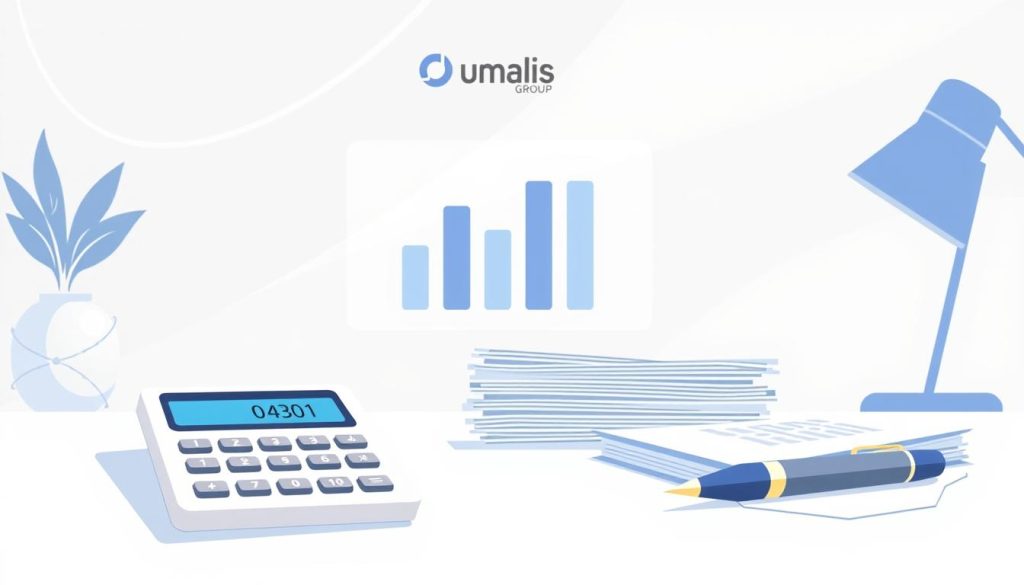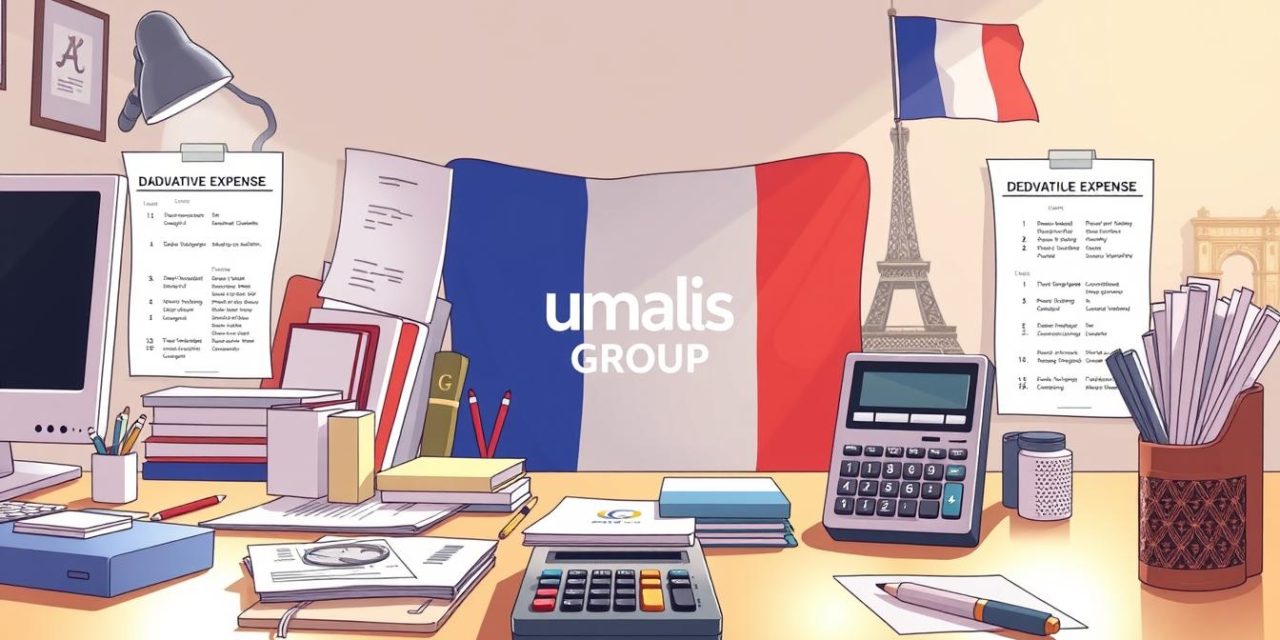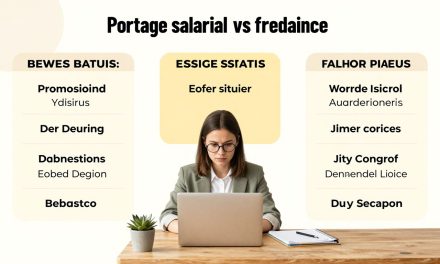Did you know that a large share of independent professionals in France leave money on the table each year? Even small, documented choices can change the final amount of income tax you pay.
We explain, clearly and practically, how credits and deductions work together to lower your taxable income and improve your refund prospects. You will learn which records matter and how to present them on your return.
Our goal is to give you step-by-step actions that protect cash flow and keep your business compliant. This short guide highlights common eligible costs, how a credit reduces the tax due directly, and why a deduction lowers taxable income first.
For deeper examples and specifics for France, see our resource on fiscal advantages and practical cases at fiscal advantages for independent workers.
Table of Contents
Key Takeaways
- Credits directly reduce what you owe and can sometimes raise your refund.
- Deductions lower taxable income, changing the base for income tax.
- Keep clear receipts and supporting amounts to substantiate claims at filing time.
- Use simple software or a checklist to place credits and deductions on the right forms.
- Organize records year-round to improve cash flow and reduce surprises at return time.
Who this service is for and how deductions work for independent professionals in France
If you run a small business in France, knowing how credits and deductions alter your final bill saves money and time.
We serve freelancers, consultants, artisans, and micro-entrepreneurs who want clear rules on how a deduction lowers taxable income and how a credit reduces the income tax due on the return.
Understanding deductions vs. credits
A credit reduces the tax bill dollar-for-dollar and some tax credits are refundable, which may increase your refund. A deduction lowers the income base first and cannot by itself create a refund.
Records you need
Keep invoices, receipts, bank statements, mileage logs, policy certificates, and engagement letters for several years. These proofs show eligibility for credits and for claimed deductions.
| Record | Why it matters | Retention (years) |
|---|---|---|
| Invoices | Supports business expenses and amounts claimed | 6 |
| Bank statements | Matches payments to invoices and receipts | 6 |
| Mileage logs | Documents vehicle business use | 3-6 |
To prepare your filing, follow our step-by-step checklist or consult the guide on how to complete your declaration.
Tax deductions independent workers can claim to reduce taxable income
Claiming the right business expenses helps independent workers lower their declared income and improve cash flow.
Ordinary and necessary business expenses
Office supplies, subscriptions, professional services, and insurance premiums are regularly deductible when they directly support your activity.
Keep invoices and link each amount to revenue. That proof makes claims reliable and defensible.
Home office and mixed-use costs
Allocate rent, utilities, internet, and maintenance by a consistent percentage for the exclusive workspace.
Document the method and apply it each year to justify the deductible amount.
Vehicle, travel, retirement and losses
Choose actual costs or a mileage log for car use; record dates, purpose, and distance.
Contributions to qualifying retirement plans lower income when supported by receipts.
Bad debts and capital losses have timing rules; track years and carryforwards carefully.

| Item | Typical proof | Common rule |
|---|---|---|
| Office supplies | Invoice or receipt | Directly linked to activity |
| Home office | Lease, bills, floor plan | Pro rata by area |
| Vehicle | Mileage log or invoices | Choose method yearly |
For detailed guidance and examples specific to France, see our page on optimisation fiscale.
Tax credits vs. tax deductions: optimizing your tax return and potential refund
A well-timed credit claim may increase your refund more than the same amount as a deduction.
How this works: A tax credit reduces the amount you owe directly. When a credit is refundable, any excess beyond your liability can become a cash refund. By contrast, a deduction first lowers taxable income, which then reduces the calculated income tax.
When a tax credit is refundable and how it can increase your refund
Refundable credits apply after income tax is calculated. If the credit exceeds the payment due, the difference is paid to you.
We verify eligibility and required evidence so the refund is processed cleanly and without delay.
Choosing deductions and credits strategically to minimize final income tax
We model scenarios with and without credits to show real outcomes. This includes timing expenses in the year or deferring costs when thresholds matter.
- Compare itemized choices vs. standard paths for your business profile.
- Test bringing forward or delaying payments to hit key levels.
- Coordinate carryovers for losses with available credits to optimize the return.
| Strategy | Effect on income | After-tax result | Evidence needed |
|---|---|---|---|
| Refundable credit | No change to taxable income | Can create a cash refund | Qualification documents, receipts |
| Itemized deduction | Lowers taxable income | Reduces tax indirectly | Invoices, logs, leases |
| Timing expenses | Shifts year income base | May change refund or payment | Payment dates, contracts |
| Loss carryover | Reduces future income base | Offsets future payments | Prior-year filings, loss schedules |
Our deliverable: a concise action plan showing how each chosen credit or deduction affects your return and expected refund or payment.
VAT and capital goods adjustments: getting deductions right over multiple years
Adjustments spread over several years ensure the VAT claimed on large assets matches actual commercial use.
When you buy capital equipment used for both taxed and exempt activity, the initial VAT entitlement reflects expected use. Each year you must compare the actual percentage of use and apply the adjustment formula to correct the position.

Adjustment formula for capital goods
The yearly change equals: (VAT on acquisition ÷ number of years) × (difference in entitlement percentage). This produces a small amount either payable to authorities or additionally refundable.
Example and yearly impact
Example: EUR 200,000 asset with EUR 40,000 VAT and a 5-year period.
| Year | Entitlement % | Calculation | Amount (EUR) |
|---|---|---|---|
| Year 1 | 60% | 40,000 × 60% | 24,000 (initial) |
| Year 2 | 56% | (40,000/5) × (60%−56%) | 320 due |
| Year 3 | 65% | (40,000/5) × (65%−60%) | 400 deductible |
| Year 5 | 58% | (40,000/5) × (60%−58%) | 160 due |
Selling or transferring during the adjustment period
If you sell or transfer the asset, the transferee makes a one-time adjustment for remaining years. If the supply is taxed the initial entitlement becomes 100%; if exempt it becomes 0%. We help you model these scenarios so you anticipate cash flow and compliance effects.
Practical step: keep a register listing acquisition value, VAT paid, adjustment period and annual percentages. We update it yearly to compute the exact amount to report and to align your accounting and income records.
From documents to filing: a step-by-step service workflow for your tax return
A structured workflow turns scattered papers into a defendable return and steady cash management.
Gather your documents
Start by collecting client invoices, bank statements, expense receipts, insurance policies, and capital purchase invoices. We supply a secure checklist so each amount for your business is captured and traceable.
Identify eligible items
We map transactions to eligible deduction categories and screen for applicable credits. This step ensures each deductible expense is supported and each tax credit claim is verifiable.
Prepare and file accurately
We prepare a concise summary aligned to your accounting and help you choose payment or refund options. Entries are cross-checked so the declared income and amounts match your records.
Be ready next year
We set a simple monthly routine for tracking income, insurance periods, mileage and mixed-use allocations. Capital purchases are logged with reminders for any multi-year adjustments.
| Step | Primary action | Deliverable |
|---|---|---|
| 1 | Collect documents | Secure checklist with invoices, policies, bank statements |
| 2 | Map to categories | Cross-referenced mapping of expenses and credits |
| 3 | File and choose payment | Prepared return summary and payment/refund plan |
| 4 | Ongoing tracking | Monthly log, mileage template, capital item register |
Conclusion
A calm, consistent routine for recording income and expenses is the clearest route to better financial outcomes.
Capture every invoice, log, and contract. Classify each deduction and verify any refundable tax credit you may claim. Pair well‑documented credits with planned deductions to reduce your final liability.
Track capital purchases and apply VAT adjustments across the required period so annual positions stay correct. Keep a tidy file of proofs—mileage, insurance, and contracts—to support each deductible amount.
We can review your records and build a simple action plan. For more on contractor obligations, see our guide on tax considerations for independent contractors.
FAQ
Who can use this service and how do deductions work for independent professionals in France?
We support freelancers, micro-entrepreneurs, and liberal professionals in France. Our approach explains how allowable expenses reduce your taxable income and how nonrefundable credits lower the amount due. We help you classify receipts, allocate mixed-use costs, and estimate impacts on your annual return.
What is the difference between deductions and credits, and how do they affect my refund?
A deduction lowers the base on which your income is calculated; a credit reduces the final liability euro-for-euro. Refundable credits can generate a payment back to you if they exceed the amount owed. We model scenarios so you see whether an expense is better used as a deduction or whether a specific credit yields a greater net benefit.
What records do I need to substantiate deductible amounts and claim credits?
Keep original invoices, bank statements, insurance documents, contracts, and mileage logs. For home or mixed-use claims, retain bills, floor plans, and a pro-rated cost calculation. We provide a checklist to ensure documentation meets administration requirements and to speed any audit response.
Which ordinary business expenses can independent workers claim?
Typical allowable items include office supplies, professional services (accounting, legal), business insurance premiums, software subscriptions, and client-facing costs. We verify each item against French rules and help allocate shared expenses so you claim the correct amount.
How do I allocate home office and mixed-use costs?
Calculate the business portion by area used for professional activity or by time if rooms are shared. Include a share of rent, utilities, entretien, and internet. We provide templates to document your allocation and to justify amounts on your return.
What documentation is required for vehicle and travel expenses?
Maintain a mileage log with date, purpose, kilometers, and route, plus fuel and maintenance receipts. If you use flat-rate methods, keep that method consistent year to year. We help you choose the method that yields the best deductible amount and ensures compliance.
Are retirement and savings contributions deductible?
Contributions to approved retirement schemes and certain business savings plans may reduce taxable income. We review your contracts—such as PER (Plan d’Épargne Retraite)—to confirm deductibility and to optimize yearly contributions for maximum benefit.
How should I handle losses, bad debts, and capital items across years?
Business losses and unrecoverable receivables can often be carried forward or offset against income, subject to rules and timing. Capital items are amortized or adjusted. We assess loss recognition and timing to minimize your net taxable position over multiple years.
When is a credit refundable and how can it increase my refund?
Refundable credits apply when the credit amount exceeds your remaining liability; the excess is paid back to you. Examples include certain energy or hiring incentives. We check eligibility and prepare claims so any refundable entitlements are recovered promptly.
How do I choose between claiming a deduction or a credit?
Choice depends on your income level, available credits, and long-term plans. We run comparative scenarios to show which option lowers your final liability most effectively and aligns with cash-flow needs.
How are VAT and capital goods adjusted over multiple years?
When you recover VAT on capital assets, adjustments may be required during the statutory period if usage changes. You must prorate the reclaimed VAT according to the adjustment formula and report yearly changes. We compute entitlements and prepare the necessary correction entries.
What happens if I sell capital goods during the VAT adjustment period?
Selling or transferring assets can trigger a partial VAT correction or repayment if original business use assumptions change. We calculate any amounts due and handle declarations to limit unexpected liabilities.
What documents should I gather before filing my return?
Collect income records, purchase invoices, insurance policies, loan statements, vehicle logs, and statements for retirement contributions. Include proof of credits claimed, such as energy invoices or hiring contracts. Our checklist ensures nothing is omitted.
How do you identify eligible deductions and credits for my situation?
We use structured checklists and a client interview to map your activities, recurring costs, and investments. This method highlights overlooked entitlements and ensures consistent treatment from year to year.
What are the filing and payment options, and how do you ensure accuracy?
We prepare your declaration, check computations, and advise on payment installments or refund choices. Electronic filing is preferred for speed and traceability. We validate entries against source documents to reduce risk of reassessment.
How can I prepare for next year to optimize claims?
Start tracking expenses monthly, separate personal and professional accounts, keep digital copies of invoices, and review contribution levels for retirement plans. We set up simple reporting templates to make annual preparation efficient and to secure long-term savings.





